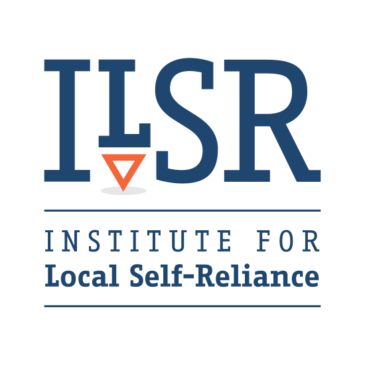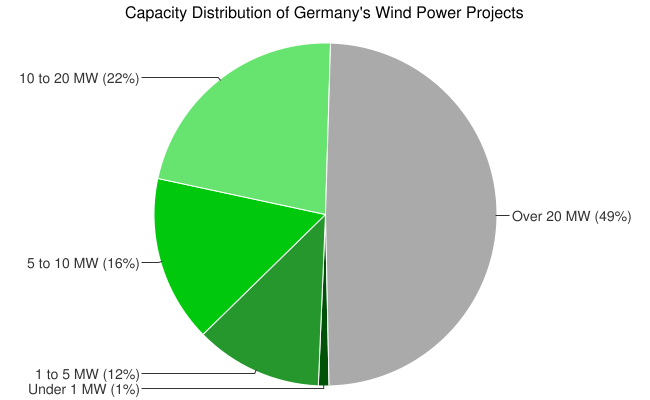Op-ed: How States Can Maximize Clean Energy Jobs
 Over 30 U.S. states mandate renewable energy and are willing to pay higher prices for clean electricity. But most states lack a jobs and economic development strategy for renewable energy, and must watch helplessly as manufacturers like Evergreen Solar move production to China. Instead, state legislators should emulate the Canadian province of Ontario by passing a comprehensive policy to capture the jobs and economic value of their clean energy transformation.
Over 30 U.S. states mandate renewable energy and are willing to pay higher prices for clean electricity. But most states lack a jobs and economic development strategy for renewable energy, and must watch helplessly as manufacturers like Evergreen Solar move production to China. Instead, state legislators should emulate the Canadian province of Ontario by passing a comprehensive policy to capture the jobs and economic value of their clean energy transformation.
Ontario’s bold clean energy program – in just over a year – has resulted in the promise of 43,000 clean energy jobs in support of 5,000 MW of clean energy projects. The centerpiece of the program is a simple, long term contract for renewable energy developers with a price sufficient to attract investment. To qualify for a contract, developers must get 60 percent of their project’s value from inside the province. The rule effectively means that no solar or wind project built in Ontario can obtain a contract without having some components manufactured locally.
This domestic content or “buy local” rule has spurred a fast-growing renewable energy industry in the province, with over 20 new manufacturing plants scheduled to open in the next two years. The new plants will manufacture solar modules, inverters, racking systems, and wind turbine blades and create thousands of jobs. The spillover effects from the new manufacturing facilities will multiply the job impacts across the province.
In contrast, the third largest solar manufacturer in the U.S., Evergreen Solar, is shifting its production to China, laying off 800 workers and closing its Massachusetts-based manufacturing plant. This announcement is on the heels of two other solar plant closures in New York and Silicon Valley.
The bleeding of jobs won’t stop unless state lawmakers enact new rules to make renewable energy easier to develop and manufacturing harder to outsource.
While Ontario provides an all-in-one contract for its wind and solar producers, developers in the United States must cobble together a hodgepodge of federal, state, and utility incentives to access financing. And while Ontario also provides a guaranteed grid connection and long-term contract for qualified projects, U.S. developers typically negotiate their interconnection and power purchase agreements with the utility individually.
Additionally, no U.S. state has married economic development and renewable energy policy as has Ontario. The most desirable, long-term jobs in renewable energy are in manufacturing and states do provide manufacturing job subsidies, such as the $44 million provided to Evergreen Solar’s Massachusetts facility. But these payments are separate from the state’s renewable energy program, with no guarantee of sufficient local demand to maintain the plant.
Only two states – Washington and Michigan – provide financial incentives for renewable energy that also encourage in-state manufacturing. In both cases, the incentive programs are too small to have much impact.
In contrast, Ontario’s clean energy program is built around a strong commitment to local manufacturing and it has attracted as many as 43,000 new jobs at a reasonable cost per job, according to the Institute for Local Self-Reliance. We estimate that Ontario pays $143,000 per job created, a cost comparable to job subsidy programs in the United States and less than some recent U.S. state clean energy job creation efforts. And unlike U.S.-based job subsidy programs, the price of Ontario’s new jobs includes thousands of megawatts of clean electricity.
Conveniently, employing the Ontario strategy in the U.S. would almost certainly cost less because of stronger renewable energy resources and higher electricity prices. For example, Colorado’s solar resource alone would allow it to provide solar developers a similar return on investment at a 33% lower price for power and its higher retail electricity price would further reduce the marginal costs of the program and the resulting jobs compared to Ontario.
Ontario’s strategy is not without controversy, and the buy local rule has drawn a World Trade Organization complaint filed by Japan and the United States. However, other countries have found ways to favor local manufacturing and production without the trade dispute, including Turkey, whose policy offers higher incentive payments for locally-produced projects, rather than requiring domestic content. Such a policy would likely also pass interstate commerce muster in the United States.
U.S. states forgo jobs and economic development because their clean energy policies lack sufficient coordination. The Canadian province of Ontario has demonstrated the power of comprehensive clean energy policy, and their lesson should be replicated by American legislators.






 Overruling a utility challenge, the Federal Energy Regulatory Commission (FERC) affirmed today that
Overruling a utility challenge, the Federal Energy Regulatory Commission (FERC) affirmed today that 


 Late last year, the Federal Housing Administration announced
Late last year, the Federal Housing Administration announced  talked with Al Weinrub as he wrote this report and I think it’s another great demonstration of the cost and local economic superiority of distributed renewable energy generation. Commuity Power helps overturn the conventional wisdom that bigger is better, illustrating how decentralized, distributed renewable energy can provide a cost-effective and economy-boosting strategy for meeting our power needs.
talked with Al Weinrub as he wrote this report and I think it’s another great demonstration of the cost and local economic superiority of distributed renewable energy generation. Commuity Power helps overturn the conventional wisdom that bigger is better, illustrating how decentralized, distributed renewable energy can provide a cost-effective and economy-boosting strategy for meeting our power needs.